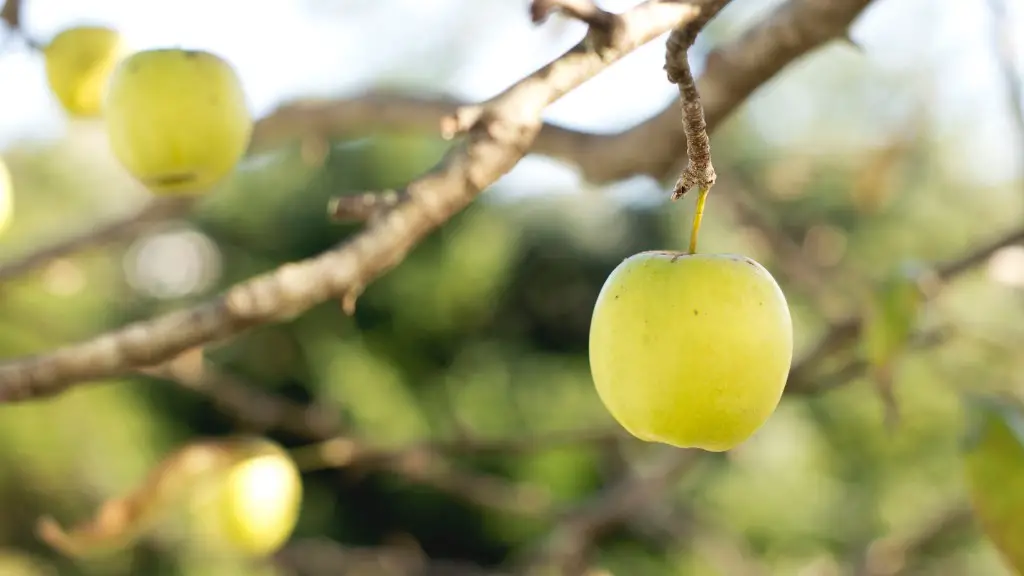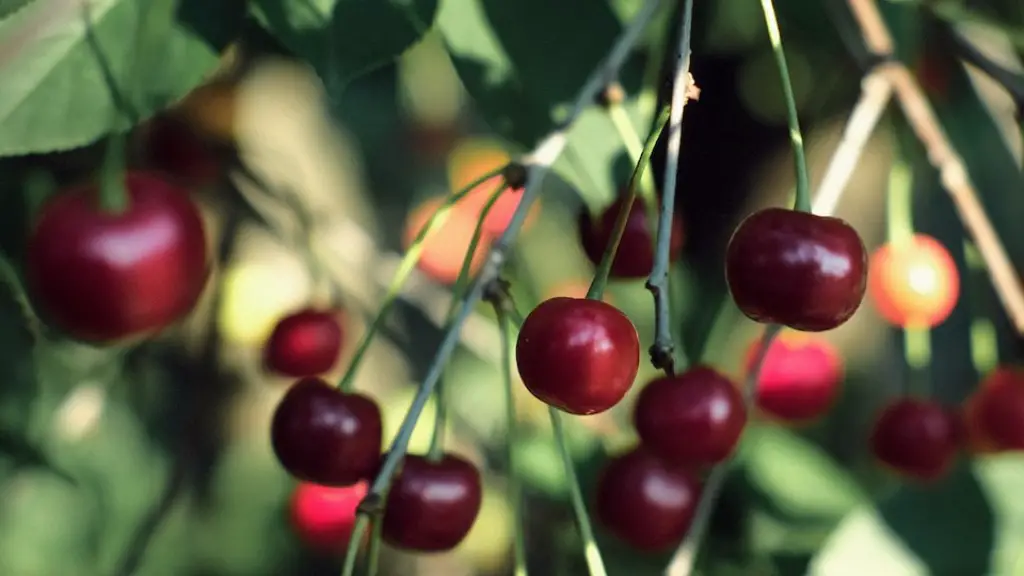Apples are lovely, popular fruits that can brighten up any fall or winter day. But did you know that you can grow your own apple tree, even if you don’t have a lot of space? All you need is a large pot and a little bit of know-how.
You can grow an apple tree in a pot, as long as the pot is big enough and has good drainage. The apple tree will need regular watering and fertilizing, and it will need to be pruned regularly to keep it from getting too big for the pot.
How big of a pot do you need for an apple tree?
Apple trees on dwarf rootstocks can go in a pot of between 18″ – 22″ / 45cm-60cm diameter. Alternatively, look for containers with a volume of 40-60 litres. For other new fruit trees, the most suitable size pots or patio containers will be those which have a top diameter of at least 60cm / 2ft.
If you want to grow apples in a container, you need to pay attention to watering and feeding. A larger pot will be more stable and won’t dry out as quickly.
How long can fruit trees stay in pots
It is important to remove a tree from its container every two or three years, and prune the roots, so they don’t circle around inside the container. This will help to keep the tree healthy and prevent it from becoming root bound. After removing the tree from the container, replace the soil with new potting mix. Then replant the tree in it.
Potted apple trees can survive winter, but they are more exposed to the dangers of frost than those rooted in the ground. To protect them, place a chicken wire around your potted tree, but leave a 6-inch space between the wire and the tree.
Can you grow an apple tree in a 5 gallon bucket?
If you’re looking to start growing a tree, it’s best to start small with a 5- or 7-gallon container. As the tree grows within its container, it will eventually become root-bound. Before this happens, you can re-pot it into a larger container. You will be able to tell that your tree has become root-bound to its current container by its lack of vertical growth.
Apples are self-unfruitful, which means that they need to be cross-pollinated by another apple variety in order to produce fruit. Plant at least two different apple tree varieties within 50 feet of one another for a good fruit set. Some apple varieties, such as Golden Delicious, will produce a crop without cross-pollination from a second variety.
Do apple trees prefer sun or shade?
When choosing a spot to plant your apple tree, it’s important to choose a sunny, sheltered site that is well away from any frost pockets. Avoid poorly-drained or shallow soils, as these can negatively impact the tree’s growth and development. With proper care and attention, your apple tree will thrive and produce delicious fruits for you and your family to enjoy.
When choosing a spot to plant your apple tree, be sure to choose an area where the sun shines directly on the tree for at least 8 hours each day. Apple trees require full sun in order to produce healthy fruit.
Can you plant apple trees in potting soil
When planting your container grown apple trees, you can use potting soil or a mix of compost and regular garden soil. Be sure to place some gravel or broken clay pot shards at the bottom of the container to facilitate drainage prior to planting the tree.
Many gardeners feed their container grown apple trees only once a year with a long lasting fertilise such as blood, fish and bone, and have good results. We recommend feeding in April and July for best results.
Do you cover fruit trees in winter?
Potted trees are more susceptible to cold damage than those planted in the ground because they can’t rely on the ground to insulate them from the cold. Therefore, it’s important to take steps to protect potted trees from the cold weather.
One way to do this is to wrap the pots in insulation material, such as bubble wrap or blankets. This will help to keep the roots of the tree warm. Additionally, it’s a good idea to place the pots in a sheltered spot, such as next to a building or under a tree.
taking these steps will help to ensure that your potted trees make it through the winter without any damage.
Starting fruit trees in larger pots will help them to grow faster and produce more fruit. The roots will have more room to spread out and the tree will be able to take in more nutrients and water.
How do you winterize a potted apple tree
This is a great way to protect your potted tree from the cold winter temperatures. By encircling the tree with wire and then dropping in mulch or hay, you are creating a barrier that will help to keep the roots warm. This is especially important because the roots are the most vulnerable part of the tree during the winter months.
Pruning is a critical step in keeping your tree small. It may seem daunting, but it is necessary in order to maintain the size you desire. Do not let the size of the tree discourage you from pruning it – it is the only way to keep it small.
How cold is too cold for apple trees?
It is always best to err on the side of caution when it comes to cold weather and your fruit. If you are in doubt as to whether or not your apples have been exposed to temperatures below 28 degrees, it is best to discard them. U of M fruit researchers have stated that apples should be okay provided the temperature doesn’t fall much below 28 degrees. However, the longer apples are exposed to colder temperatures, the higher the chance of damage.
In our orchard park, we water our newly planted trees up to three times a week, with three large buckets of water each time. That’s about 15 gallons of water.
Warp Up
Yes, an apple tree can be grown in a pot.
). While you can technically grow an apple tree in a pot, it is not recommended as the tree will not grow to its full potential and will produce smaller fruit.



